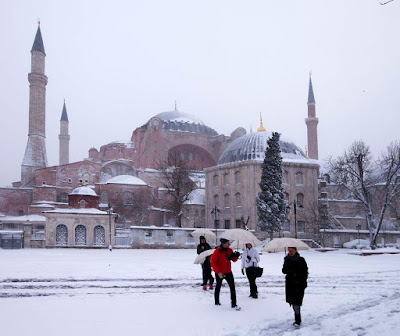I was sitting at an outdoor table at a cafe in Istanbul enjoying the first appearance of the sun after a Huge Blizzard. Skimming the news on the internet while sipping a demitasse of Turkish coffee I saw this headline: Camel Festival Takes Place In Mongolia. Clicking on the story I read:
“A ten-year-old male camel belonging to herder Shoovoi from the Shinejinst soum (district) has been named ‘Best camel’ of the year. A total of 22 male camels took part in a competition in which they were rated on their appearance.”
It just so happens I know Shoovoi and have even ridden one of his camels. I first met him on a camel trip I did in Bayankhongor Aimag back in 1999. He is married to the sister of my old pal Zevgee (now Deceased), with whom I did Twelve Horse And Camel Trips over the years. Zevgee was born in Bayankhongor Aimag but later moved to Töv Aimag, where his wife is from. He told me that he still had five brothers and a sister in Bayankhongor and that two of his brothers and his brother-in-law were famous for their camels. Eventually we traveled to Bayankhongor by jeep and hired camels from his brothers Davakhüü and Khaidav. Then both Davakhüü and Khaidav accompanied us on a 124 miles camel trip from near the sum center of Shinejinst to the sacred mountain of Segs Tsagaan Bogd Uul the Chinese border.
Davakhüü
Khaidav
Halfway through the camel trip south to Segs Tsagaan Bogd Uul we made a detour to visit Zevgee’s sister and Shoovoi, who at the time were camped with their sheep, goat, and camel herds at a tiny spring in an extremely remote area northeast of Ekhiin Gol Oasis.
Shoovoi, camel herder extraordinaire, and his wife, Zevgee’s sister
Zevgee’s sister
We stayed the night and Shoovoi killed a goat and his wife made khorkhog for us. To prepare this classic Mongolian dish an entire goat (not including head and innards) is cut up and put into a big milk can along with rocks heated in a campfire. The can is then tightly sealed. The hot rocks and the steam that builds up in the milk can cooks the meat. After an hour or two of cooking the can is rolled across the desert floor for twenty or thirty minutes. This tenderizes the meat. Then with great care—quite a lot of steam pressure has built up— the can is opened.
Khorkhog in serving dish. According to tradition you should always juggle one of the hot rocks in your left hand while eating with the right hand. This allows you to absorb the full essence of the goat.
Over the years I visited Shoovoi and his wife twice more and they always offered to cook a goat for us. On one trip we used some of his camels.
Shoovoi, on the right, behind the camel, helping us pack a load on a later camel trip to Shar Khuls Oasis in Bayankhongor. This guy knows more about camels than you or I will know in one hundred lifetimes.
At the start of the trip to Shar Khuls Oasis. The white camel, which I rode, belonged to Shoovoi.
Zevgee and his wife at Shar Khuls Oasis. The two magnificent Bayankhongor camels belonged to his brother Davakhüü. Bactrian camels are, of course, the most noble of all four-legged creatures, and more noble than many two-legged creatures (click on photo for enlargement).
Camels. You can’t help but love them (click on photo).
Camels on parade at the 2017 Camel Festival. Shoovoi’s camel won the “Best Camel of the Year” award (not my photo).


















































